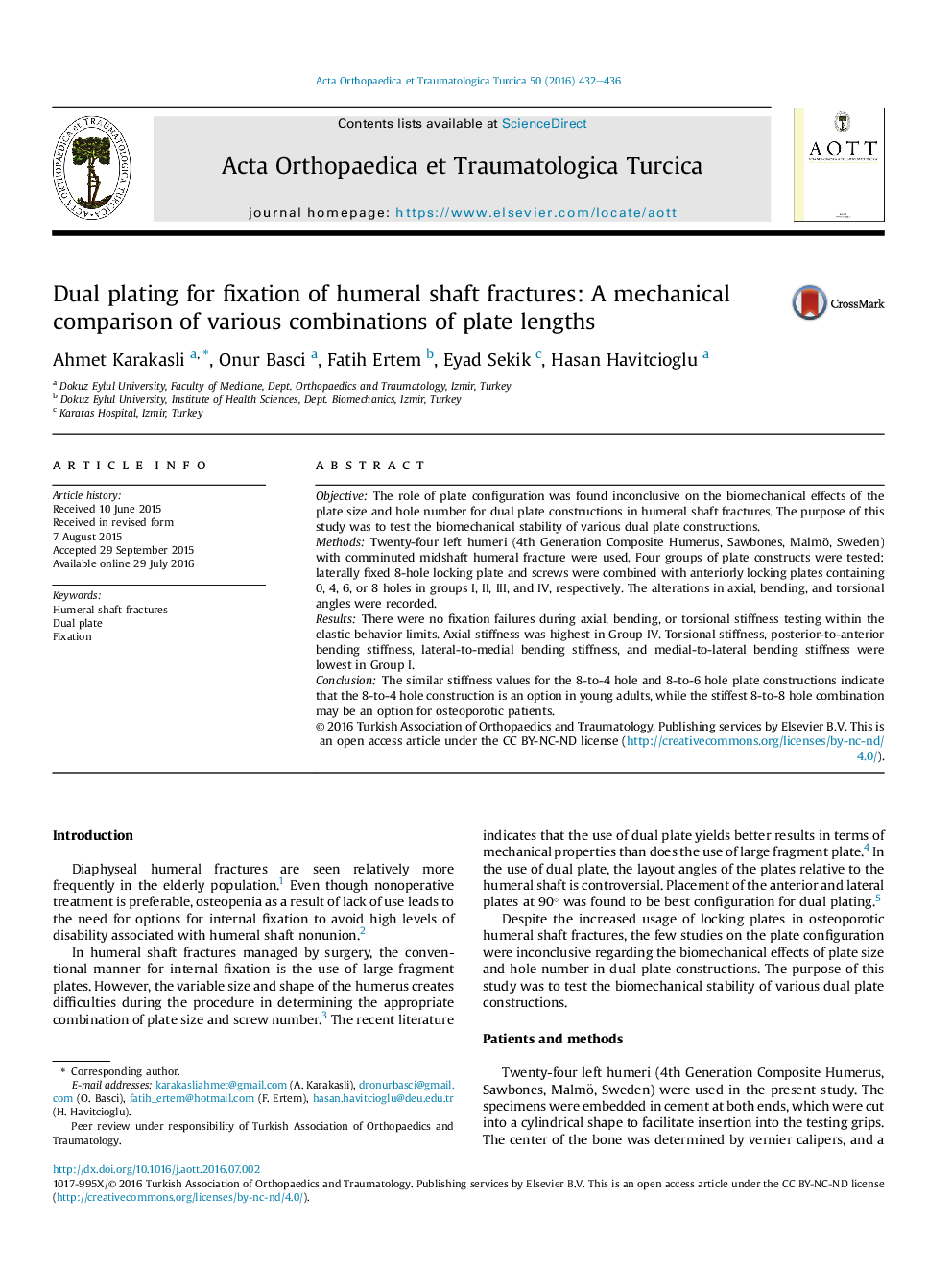| Article ID | Journal | Published Year | Pages | File Type |
|---|---|---|---|---|
| 4040013 | Acta Orthopaedica et Traumatologica Turcica | 2016 | 5 Pages |
ObjectiveThe role of plate configuration was found inconclusive on the biomechanical effects of the plate size and hole number for dual plate constructions in humeral shaft fractures. The purpose of this study was to test the biomechanical stability of various dual plate constructions.MethodsTwenty-four left humeri (4th Generation Composite Humerus, Sawbones, Malmö, Sweden) with comminuted midshaft humeral fracture were used. Four groups of plate constructs were tested: laterally fixed 8-hole locking plate and screws were combined with anteriorly locking plates containing 0, 4, 6, or 8 holes in groups I, II, III, and IV, respectively. The alterations in axial, bending, and torsional angles were recorded.ResultsThere were no fixation failures during axial, bending, or torsional stiffness testing within the elastic behavior limits. Axial stiffness was highest in Group IV. Torsional stiffness, posterior-to-anterior bending stiffness, lateral-to-medial bending stiffness, and medial-to-lateral bending stiffness were lowest in Group I.ConclusionThe similar stiffness values for the 8-to-4 hole and 8-to-6 hole plate constructions indicate that the 8-to-4 hole construction is an option in young adults, while the stiffest 8-to-8 hole combination may be an option for osteoporotic patients.
